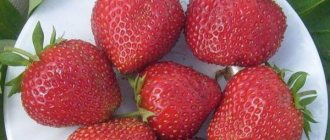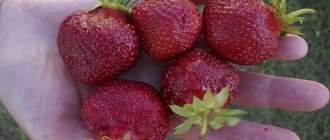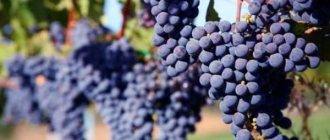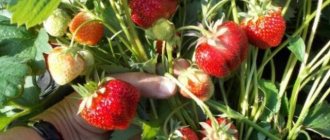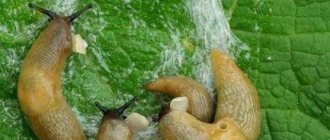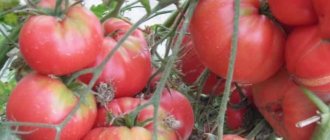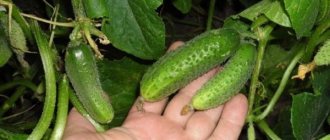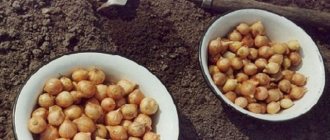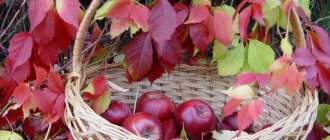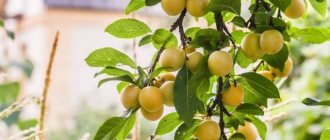Description of the Assol cherry variety
Breeders recommend growing Assol cherries in the Central region. During its distribution, the variety gained popularity in the Moscow region, but it is planted not only here, even in the Urals and Siberia, as well as in the southern regions.
Height and dimensions of an adult tree
The Assol variety has a medium-sized tree, convenient for careful care and for collecting fruits:
- rises to 2-2.5 m;
- the pyramidal crown is wide-spreading, round, with slightly drooping or straight shoots;
- not prone to thickening;
- The bark of the branches is brown, smooth.
The tree is fast-growing - already by the beginning of fruiting, 3-4 years after planting, it reaches the declared height - no more than 3 m. The medium-sized leaves are somewhat elongated, obovate, of the usual dark green color, with a pointed tip. The leaf blades are slightly wrinkled, matte, with finely serrated edges.
Without proper pruning, it can turn into a shrub, since shoots grow densely from below.
Description of fruits
Assol cherry berries, according to the variety description and photo, are medium in size - 4-4.2 g. The fruits are round, with juicy sweet and sour pulp. The small bone is easily separated from the pulp. The berries contain 15% dry matter, 10% sugar, 1.3% acid. Tasters rated Assol cherry fruits at 4.7 points. Cherries in the phase of full ripeness cannot be left on the branches for a long time, since although they are supported by the stalks, they quickly lose their taste properties and the quality of their dense, elastic pulp. The Assol variety is suitable for planting in the southern regions; the fruits tolerate the sun well.
The skin of the fruit of the Assol variety is dark red, the flesh is the same color
Pollinators of the Assol cherry
The tree blooms in the recommended growing regions mainly by mid-May; the flowering period is short. The variety is self-fertile. The authors of cherry indicate that this property of the tree does not affect the volume of the harvest.
Reviews
There are no negative reviews about the Assol cherry variety. The variety appeals to all gardeners, no matter who grows it. Difficulties in growing cherries are rarely encountered. Experienced summer residents recommend fertilizing cherries 4 times a year. Older trees need nitrogen fertilizers more than young ones. To increase pollination during flowering, you can shake the cherry bush slightly so that pollen falls on neighboring flowers. To increase the yield, you can plant a couple of self-fertile varieties with Assol, so pollination will occur more intensely. It is not recommended to store berries in an apartment for a long time; they lose their taste and appearance. According to reviews, they make very tasty cherry compotes and jams.
The Assol cherry variety is one of the proven varieties that do not let you down and regularly produce tasty fruits. The variety has many positive qualities; it is known and grown with pleasure in thousands of summer cottages throughout the country and abroad.
Main characteristics of Assol cherries
The mid-season cherry variety Assol, judging by the photo and description of the variety, is productive. From a medium-sized tree, 10-12 kg of juicy and tasty berries are collected.
Drought resistance, frost resistance
Since the Assol cherry was bred for the central regions of Russia, the tree has average winter hardiness and at the same time is drought-resistant. The variety is suitable for cultivation in the 4th frost resistance zone, which includes many regions of Russia. The wood can withstand frost up to 30 °C. Like many cherry trees, Assol tolerates long periods of drought, but with regular, infrequent watering, the yield increases significantly.
Productivity
The seedling is formed over 3-4 years. The first fruits appear in the 3-4th, sometimes in the 5th year after planting. At first the yield is low, then after 2 years it increases to 7 or 10-15 kg per tree. The berries of the mid-season Assol variety are filled with juice by the end of June. Fruiting lasts until early July. The berries must be picked quickly as they spoil, especially on rainy days.
Cherry yield depends on:
- from soil fertility;
- proper planting of seedlings;
- proper watering and fertilizing.
Juicy, soft cherries are not transported long distances. Possible transportation of 100-200 km:
- in small containers;
- in sealed packaging;
- if the berries are picked with the stalks.
The berries remain marketable for up to 20 hours. Refrigerate for up to 2 days. The fruits of the Assol cherry are universal in purpose. Used fresh as dessert, and for various preparations.
Advantages and disadvantages
Gardeners are attracted by the positive properties of the Assol variety:
- self-fertility;
- good yield;
- resistance to some diseases characteristic of the culture;
- the adaptability of wood to the climatic conditions of the Central region of Russia, which includes such characteristics as frost resistance and drought resistance.
As a disadvantage, some gardeners note the excessive acidity of the berries. The reason for this property is illiterate excessive watering, rainy summers or picking fruits that have not reached the full ripeness phase.
Specifics of tree care
Systematic care of cherry plantations is a guarantee of a bountiful harvest. Assol is an unpretentious tree, but it requires certain nuances of care.
Irrigation
Cherry is a moisture-loving plant, but excessive watering can harm the plant. Supplemental irrigation is used during the dry season and during the budding stage. For one adult tree, up to 40 liters of warm water should be used per single watering.
When moisture stagnates at the roots, Assol fruits begin to become significantly sour.
Fertilizing
The main set of nutrients and mineral supplements is introduced during the planting of the seedling. Full fertilizing begins when the plants are three years old. They use ammonium nitrate, mullein, infusion of bird droppings, and mulching the tree trunk circle with humus. Potassium-phosphorus complexes and calcium are important for cherries.
Whitewashing the trunk
A time-tested folk method of protecting trees from aphids and other insect pests is whitewashing the trunk with slaked lime. Treatment is carried out twice per season - in early spring and late autumn.
Sanitary and forming trimming
To properly form the crown, forming pruning is carried out in autumn and spring, where overgrown shoots and branches that thicken the crown are removed. During sanitary pruning, it is necessary to remove dried and pest-infested stems.
Read also: Candles with sea buckthorn oil instructions for use
Preventative treatment
During the budding period, in the spring, cherries are sprayed with antifungal drugs: Bordeaux mixture, copper sulfate or Fitosporin. To prevent attacks by insect pests, intensely fragrant plants are planted next to the cherries: marigolds, calendula, coriander and others. It is important to systematically remove weeds and loosen the space near the trunk, and whitewash the trunk with lime.
Shelter from frost
Preparing a tree for the winter involves creating shelter for the root system. The tree trunk circle is carefully loosened, weeds are removed and mulched with last year's leaves, hay and sprinkled with wood ash. The trunk is covered with slaked lime. The branches of the plant are pruned, completely removing all dried shoots.
Planting Assol cherries
Compliance with the requirements of agricultural technology when planting a cherry tree predetermines its further development and fruiting. It is important to pay attention to each stage of cultural construction.
Recommended timing
In the climate of the middle zone, it is recommended to plant cherries in the spring at the end of April, early May. Over the summer, the tree takes root, grows stronger, expands its crown and subsequently easily endures the winter.
Having bought a seedling with a closed root system, it is also better to move the cherry to a permanent place at least until mid-June
Advice! Assol trees are planted when the soil temperature rises to 8-10 °C.
Site selection and soil preparation
The Assol cherry variety is unpretentious, develops well and bears fruit on any type of soil, but the best results are obtained on soils with neutral acidity.
When planting cherries, you need to find a place for the tree in the garden that meets the following requirements:
- groundwater is no higher than 2 m to the surface of the earth;
- the plot is sunny, not shaded by buildings and tall ornamental trees;
- not blown by north winds;
- When placing several cherries, dig planting holes at a distance of at least 3-4 m so that the tree crowns are well ventilated.
How to plant correctly
High-quality cherry seedlings of the Assol variety are selected according to the following characteristics:
- tree age – 1-2 years;
- height from 1 to 1.5 m;
- trunk diameter – 1.5 cm;
- the tree has at least 10 branches, up to 50 cm long;
- The length of the root shoots is at least 25 cm.
In the selected area, dig a planting hole up to 50-70 cm deep and the same width. A larger volume is chosen if a special substrate is laid on soils that are not favorable for cherries. On clay soil, humus, sand, and peat are added to the top fertile layer. If the soil is predominantly peaty or sandy, some clay and humus are mixed into the pit. Add 500 ml of wood ash, 25-30 g of potassium chloride, 50-60 g of superphosphate to the planting substrate.
Before planting, cherry roots are soaked in a clay mash for several hours. Selected growth stimulants are added to the mixture if desired.
Attention! If a cherry seedling has shoots near the ground, they are cut into a ring.
Pros and cons: is it worth planting?
To choose the right cherry variety for your site, it is important to study the main advantages and disadvantages of the plant. Experienced gardeners include the following main advantages of the Moscow cherry variety:
- self-fertility;
- winter hardiness;
- the lifespan of a tree is 15-20 years;
- high commercial quality of fruits;
- lack of tendency to thicken;
- resistance to coccomycosis and moniliosis;
- precociousness.
Note: Assol cherry variety has a high tasting rating. On a five-point scale, the fruits scored 4.7 points; many gardeners call Assol berries cherries.
Among the disadvantages of the variety are:
- Under unfavorable conditions of care and climate, the berries begin to taste bitter.
- Demanding about soil and fertilization.
- Does not tolerate excess moisture.
Features of care
The tree is not picky. With proper watering and fertilizing, it shows good yield.
Watering and fertilizing schedule
In the first year of growth, Assol cherries are watered 1-2 times a week. Trees are watered four times a month if there is no rain.
Superphosphate and wood ash are used as fertilizer, applying substances along the perimeter of the crown two to three times during the summer. Nitrogen fertilizers are used in early spring and after flowering. When the ovaries form, organic matter is added - mullein, wood ash or complex fertilizers with phosphorus and potassium, which are bought in various proportions in gardening stores. The last feeding is carried out in August with superphosphate.
In October, moisture-recharging irrigation is desirable - up to 60-70 liters per tree.
Comment! The seedlings are especially carefully cared for during the dry period, so that the soil at the depth of the roots is moderately moist.
Trimming
Prune Assol cherries in the fall, removing damaged shoots and growth from below. Formative pruning is carried out in February or early March.
Preparing for winter
In the fall, after sanitary pruning, the trunk is whitened with lime mortar. With the first frost, the tree is wrapped with protective material against rodents. The soil near the trunk is mulched.
Preparing for winter
Before the onset of winter cold, be sure to prepare the cherries so that they can withstand frost without any problems. To do this, in the second half of November, cut off all excess shoots and mulch the soil near the trunk so that the soil near the roots freezes less. When pruning trees, shoots that are longer than 50-55 cm are removed. Having finished pruning the branches, the tree trunk is covered with lime liquid and watered 2-3 times.
See also
Description of the Ognevushka cherry variety and its characteristics, advantages and disadvantagesRead
Diseases and pests
The Assol variety is resistant to scab and coccomycosis, and is relatively rarely affected by moniliosis. The tree may be susceptible to some other diseases, so mandatory prevention is carried out in the spring. The cherry and the tree trunk are sprayed with copper sulfate, Bordeaux mixture or modern fungicides, which are also used in the initial stages of infection: Fitosporin, Polyram, Topsin, Horus.
Insecticides are used against leaf-eating insects and larvae of flies or beetles that damage berries. But it is more effective to spray in early spring and remove leaves in the fall, cleaning the bark where insects overwinter.
Shelter for the winter
Before the coming winter, at the end of October they begin to prepare the tree for winter. With proper preparation, the Assol variety will easily survive even the harshest winter and will not freeze. The main stages in preparation are pruning the shoots, treating the tree trunk with a layer of mulch, whitewashing the trunk, and watering.
Preparation begins with trimming and whitewashing the trunk. Only those shoots whose length exceeds 50 centimeters need to be shortened; young branches are not touched. If there are old and dry branches, they are cut off. The barrel is whitened with white enamel. Then the tree is watered with 3-4 buckets of water. Now you can lay a layer of mulch. Use hay, leaves, manure, the mixture can be combined. When snow falls, it is raked up to the cherry tree trunk. Snow will protect from the cold and retain moisture in the ground.

